Global Literacy Journeys in First Grade–Far Away Places…Yet Close to Home!
Lacey Elisea and Jane Metzger
We are educators at Creation School, a Lutheran school located in Vail, Arizona, approximately 20 miles southeast of Tucson. Lacey Elisea has a degree in early childhood and is Creation’s first grade teacher. Jane Metzger has early childhood, elementary, and special education certifications and experiences. She co-teaches with Lacey in first grade.
We had the opportunity to loop up with our kindergarten class from the previous school year, who had just begun developing their love of reading. We expressed our request to our principal to “Loop Up for Literacy!” The main benefit of moving up with the class was the rich strong relationships among students and with us that had already developed during the previous school year.
Our school is developing a curriculum around global literature. The focus of this curriculum is on helping students appreciate the individual cultural beings they are and how their identities shape the ways they act and think; encouraging open-minded perspectives towards children whose ways of living, valuing, and thinking may be similar to or different from theirs; inviting students’ inquiries into curiosities they notice in their world; challenging students’ critical thinking about themselves, others and events; and expanding students’ intercultural understandings. As Kathy Short (2016) states, readers “immerse themselves into story worlds to gain insights about how people around the world live, feel, and think–to develop emotional connections and empathy as well as knowledge” (p. 5).
Our first grade class consisted of 15 returning students and five students new to Creation School. In developing our curriculum we wanted to support students as readers and writers on their personal literacy journeys through authentic literacy experiences. Stephanie Affinito (2021) points out in Leading Literate Lives that “we might find ourselves focusing more on the skills needed to read and write rather than on the dispositions needed to sustain those practices” (p. 10). Our goal was for the students to identify as readers and writers, not just know how to read and write.
In this vignette, we share some of the ways we integrated literature, particularly global literature, as much as we could into our curriculum.
Learning About Ourselves and Others through Read-Alouds
Read-alouds are a critical part of our curriculum. Global literature such as I’m an Immigrant Too! (Fox & Ghosh, 2018), Your Name Is a Song (Thompkins-Bigelow & Uribe, 2020) and This Is How We Do It: One Day in the Lives of Seven Kids from Around the World (Lamothe, 2017) were important in helping students understand themselves, others, and the world more deeply. One aspect was helping students learn from their parents about their family’s origins which they marked on a world map. Figure 1 shows Austin’s map with Canada, Ireland, and Germany marked in yellow for where his ancestors came from prior to coming to the United States. Austin even added a map key in the lower left corner of his map.
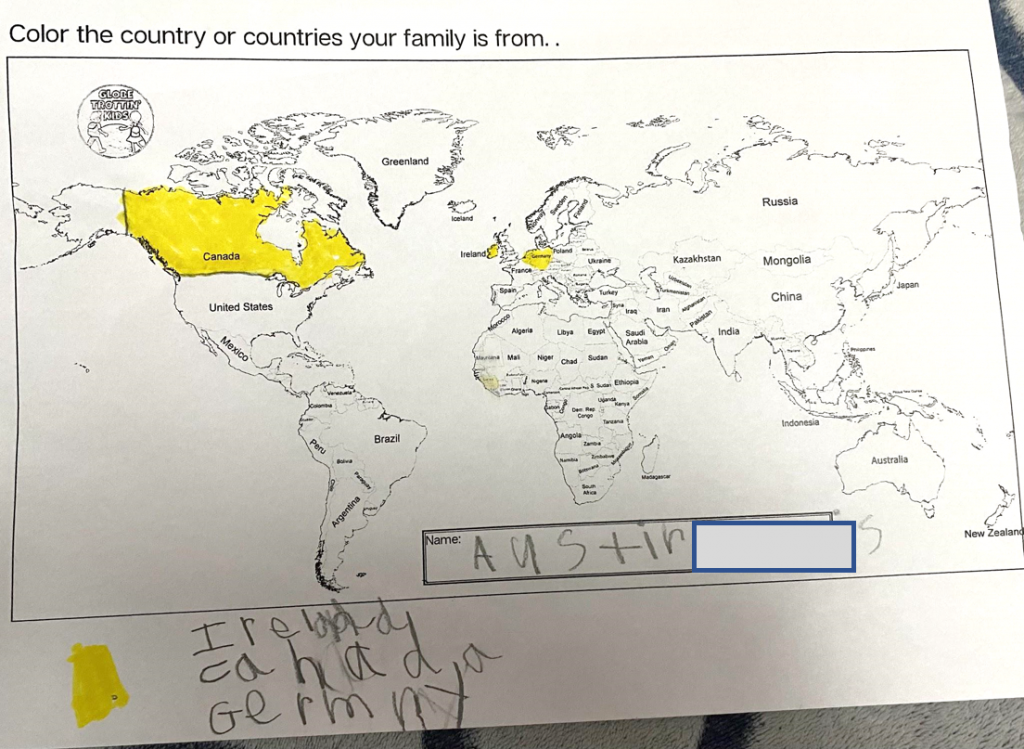
Figure 1. Austin’s map of his family’s origins before coming to the United States
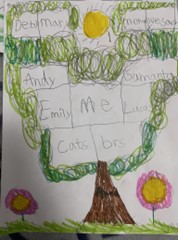
Figure 2. Anna’s family tree (L-R: Deby, Marvin, Maria/Vicente, Andy, Samantha, Emily, Me, Lucas, Cats, Birds)
To further explore our families, students created family trees. Each student’s tree was different and included many people or just a few. Students shared their family trees with the class. They enjoyed hearing the different names of family members and how their classmates refer to their parents and grandparents. Figure 2 shows Anna’s family tree. Anna included four tiers: grandparents, parents, siblings, and pets.
Read-Alouds and Learning about Others
In kindergarten our read-aloud experiences began with the Magic Tree House series by Mary Pope Osborne (2008). This read-aloud time was a transitional afternoon “down time” activity but in first grade became a coveted opportunity for first graders to read-aloud to their peers. Lacey typically did the read-aloud until one day, on her own, Emelyn naturally engaged in choral reading by reading aloud with Lacey. Emelyn was seated next to Lacey. When Lacey noticed Emelyn looking at the pages, she began to track the reading with her finger. Once Emelyn saw where Lacey was in the book, she read out loud with her. Lacey trailed off reading and Emelyn continued to read until the end of the chapter, with Lacey joining back in when Emelyn needed support. Soon after Emelyn’s read-aloud debut, her classmates eagerly and voluntarily followed suit. This gave students confidence and helped them identify themselves and each other as readers.
The Magic Tree House series also provided an opportunity to research and learn more about faraway places. For example, students were excited to learn about the Olympics in our classroom and in physical education and art (see the Sutherland and Elisea vignette in this issue). With the Winter Olympics in Beijing, China, around the Lunar New Year, we read Day of the Dragon King (Osborne & Murdocca, 1998). In this book the main characters, Jack and Annie, travel back to ancient China. While in China, a powerful emperor called the Dragon King orders that all books be burned. We located China on the world map, discussed the symbolism of the dragon in China, and researched if there was really a Dragon King who ordered books to be burned. The students “lived” their way through The Magic Tree House books rather than merely listened to gain knowledge (Rosenblatt, 1938).
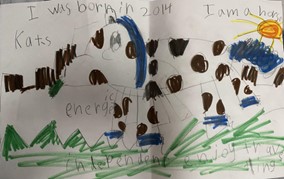
Figure 3. Kat’s response: I was born in 2014. I am a horse. Energetic, independent and enjoy traveling.
Our study of China extended beyond this with other read-alouds. One example is The Great Race: Story of the Chinese Zodiac by Christopher Corr (2018). This book explores the Chinese zodiac by having the animals take part in a great race. We learned what the animals represent and how they relate to the Chinese New Year. After reading the book, we researched the year students were born, what the animal was for that year, and the traits of that animal. We invited students to think about what they saw in themselves that was the same as their animal. Kat’s response to being born in the Year of the Horse is in Figure 3.
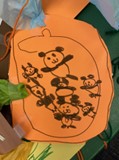
Figure 4. Riley’s kite with Bing Dwen Dwen, the 2022 Winter Olympics mascot
We also explored other Chinese traditions and symbolism with read-alouds. Grace Lin’s (2004) Kite Flying celebrates the Chinese tradition of kite making. In the book a family makes kites together. The book includes a summary of the history and importance of Chinese kites, including how the shape of a kite can symbolize the traits the person flying it wishes to possess. We invited students to make kites. Their kites included lizards, dragons, and many more animals. Riley drew Bing Dwen Dwen (the 2022 Olympics panda bear mascot) on her kite. She said that while studying the Olympics she learned that Bing Dwen Dwen was lively (see Figure 4).
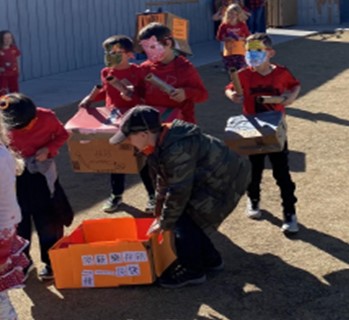
Figure 5. Students in the Lunar New Year parade that included a box of oranges
Our study of China included many other read-alouds, including folk tales like Two of Everything (Hong, 2017), and concluded with a Lunar New Year parade for which students made tigers, drums, dragons, and other items. Noel and C.J. brought oranges from home to hand out to parade patrons because we learned that oranges symbolize good luck. They also made a box to carry the oranges on which they glued Chinese characters that said, “Happy New Year” on the side (see Figure 5).
Through our read-alouds students grew in their knowledge and understanding about themselves, others, and the world without ever leaving the classroom.
Bringing Home-Reading into the Classroom
To strengthen our home-school connection, we invited students’ parents to visit and share their favorite childhood books and/or their first grader’s favorite book. Students loved parents coming to the classroom and asked many questions.
Jenna’s mother bought books from her childhood growing up in the Czech Republic. She explained that she read the books when she was in first grade. We located the Czech Republic on a globe in reference to where we live in Arizona. Students looked through the books and compared our first-grade books with first-grade books in the Czech Republic. They recognized words that were similar to English and differences in letters. They enjoyed hearing about Jenna’s mother’s first grade experiences.
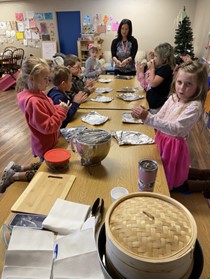
Figure 6. Students making boas with Noel’s mother
Nolan’s mother shared one of Nolan’s favorite books, The Ninja Club Sleepover by Laura Gehl and MacKenzie Haley (2020) about a group of girls who are best friends. The girls learn to face their fears and celebrate their true selves. When asked what the message in the book was, Riley said, “To love who you are and do not try to hide who you are because your friends will still love you.” She asked Lacey to send the title to her mother because she wanted a copy for her own library at home.
Noel’s mother visited and read Amy Wu and the Perfect Boa (Zhang & Chua, 2019) about an Asian-American girl who tries to make the perfect boa (a steamed dumpling/bun, traditionally with a pork filling). Everyone in the family makes boas perfectly except Amy, but Amy continues to try. Noel’s mother demonstrated how to make boas, wrote out the steps, and invited students to make their own perfect boas (see Figure 6). Students commented on how the boas looked like tacos and the dough felt like regular bread. In their journals, they wrote their favorite recipes to make at home or their favorite foods. Nora wrote a recipe for cookies [see Figure 7 (left)] while Taylor listed her favorite foods [see Figure 7 (right)]. Taylor commented, “My family likes to barbecue.”
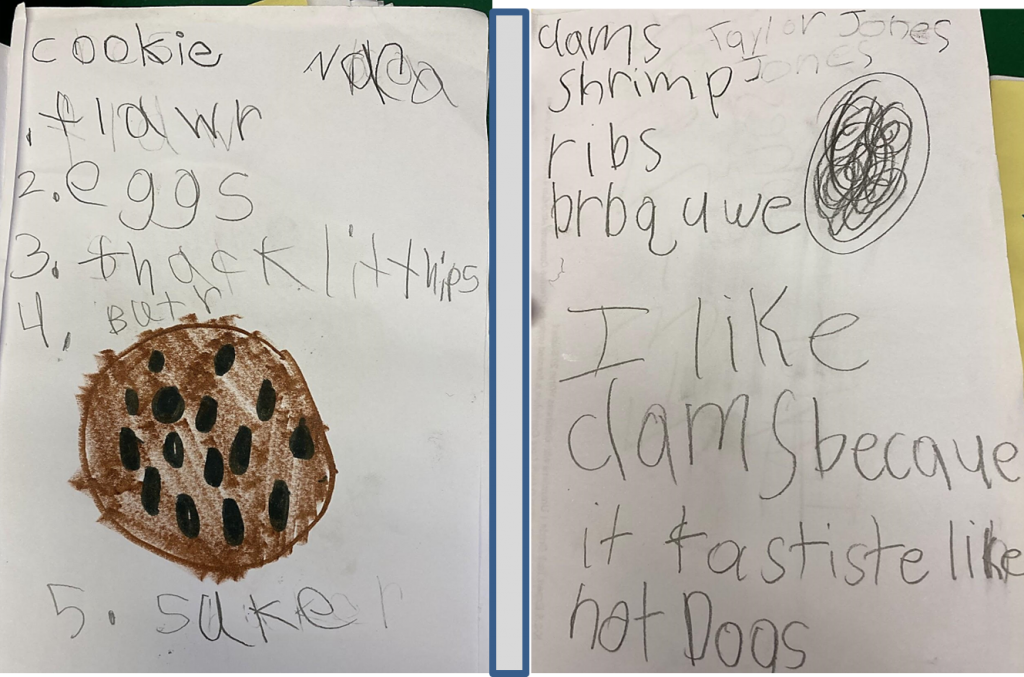
Figure 7. Nora’s cookie recipe (left: cookie, 1. flour, 2. eggs, 3. chocolate chips, 4. butter, bake). Taylor’s favorite foods (right: clams, shrimp, ribs, barbeque; I like clams because it tastes like hot dogs.)
These varied experiences allowed students and parents to share their favorite books from home, bringing reading personalities into the classroom so we could better understand the types of literature they enjoyed now or in the past. Bringing books from home offered children an opportunity to experience books from different genres and diverse backgrounds and cultures that may not have been in our classroom library.
Book Clubs
As readers ourselves who enjoy participating in book clubs, we decided it’s never too early to invite students to join book clubs. Our first graders responded more enthusiastically than we envisioned and became voracious readers!
Our first-grade book clubs consisted of three-to-four students who read the same book. Each student had a book club folder which contained suggestions on different ways to respond to what they had read. These suggestions included writing details after each chapter, creating a cultural x-ray for a character, writing/drawing connections the reader made with the book, or creating a book report. It was important to us to provide students with choices because, as Stephanie Affinito (2021) states, “If we consistently require artificial responses to reading, the reading will become artificial to our students” (p. 52). Our hope was that providing space for students to choose how to express their responses to what they read would maintain a balance between assessments and enjoyment of reading. Figure 8 shows students preparing for their book clubs.
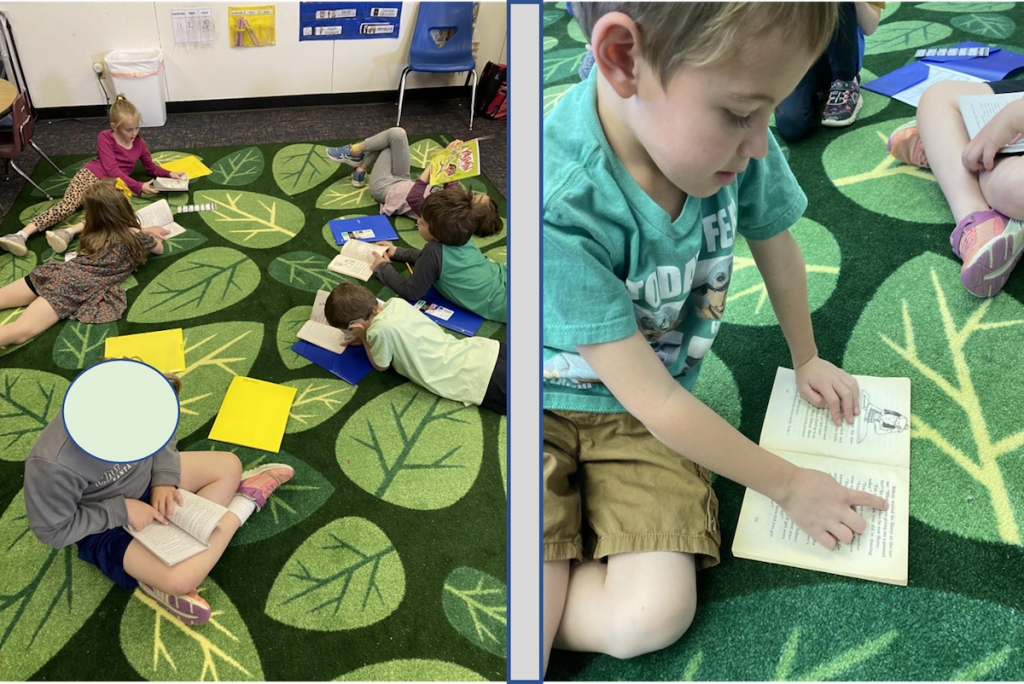
Figure 8. Students preparing for their book clubs
One of the favorite books among the book clubs was Katie Woo and Friends (Manushkin & Lyon, 2012). This book series is part of a beginning reading collection of short chapter books that follow the characters through multiple adventures. Katie Woo, the main character, is Chinese-American. After reading Katie Woo and Friends, the book clubs asked for more Katie Woo books. Students’ responses indicated they not only related to Katie Woo but also empathized with her struggles. Figure 9 (left) shows Avery’s analysis of Katie’s friend JoJo and Figure 9 (right) shows Jenna’s character analysis of Katie.
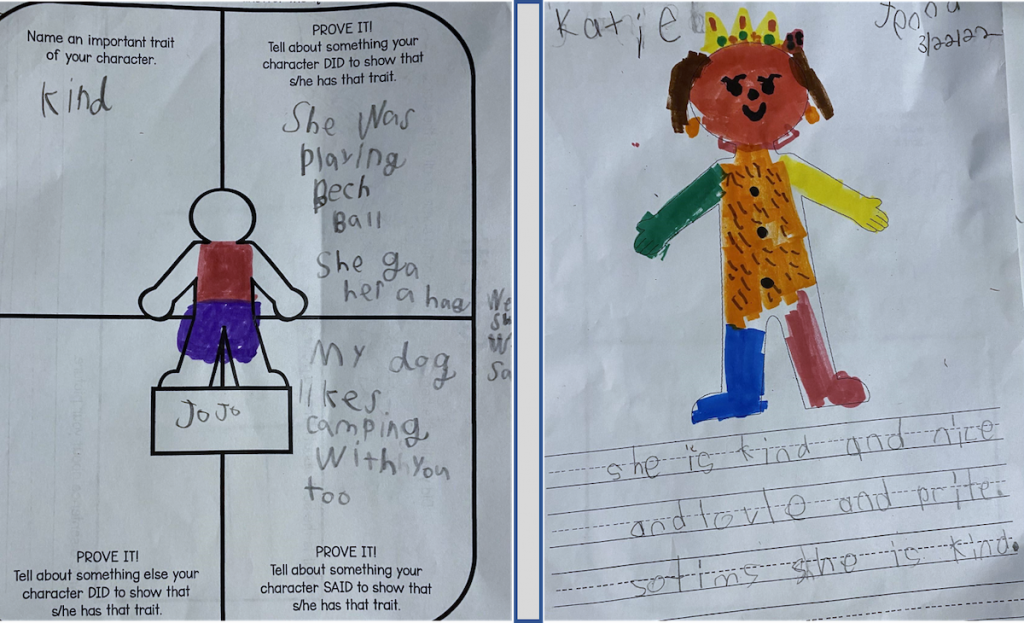
Figure 9. Avery’s analysis of Katie’s friend JoJo (left: Kind. She was playing beach ball. She gave her a hug when she was sad.; My dog likes camping with you too.) Jenna’s character analysis of Katie (right: She is kind and nice and lovely and pretty. Sometimes she is kind.)
Students began requesting to sit in the esteemed Author’s Chair to share book responses with their classmates. They were invested in the books and wanted others to know what they enjoyed and didn’t enjoy. Once in the Author’s Chair, students shared their thoughts, ideas, opinions, character maps or other ways they captured their reflections on the book. While sharing about Stink the Incredible Shrinking Kid (McDonald & Reynolds, 2021), Riley said, “I prefer nonfiction books about animals. If you enjoy fiction stories about boys, I would recommend this story.” When Emelyn shared her response to Flat Stanley (Brown & Pamintuan, 2013) she said, “This book is not really my style.” This led to a discussion about what she meant about style. These interactions allowed us to witness first graders’ journeys in literacy and discover their passions for literature.
At first the book clubs were a structured time in the classroom but then developed into a more natural organic experience. The book club members would discuss the books and decide what to read next. Even the members in the book club became organic as students gravitated toward classmates who had similar reading interests instead of those at the same reading level.
We were able to watch relationships form over literature and the differences in reading level disappear. When a student needed help reading or understanding the book, the book club members helped each other. The clubs selected books from our diverse library, and they had the opportunity to form stacks of books of various genre/interest levels. All books were easily available and accessible to them. Stephanie Affinito (2021) states that the best piece of advice to strengthen reading communities is to “find a reading partner: a fellow reader who is ready and willing to talk books, swap titles, and kibbitz about the contents” (p. 74).
Writing and Illustrating Experiences
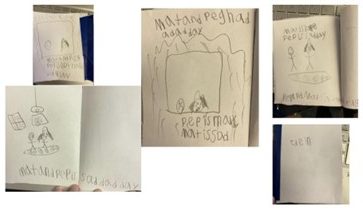
Figure 10. Nolan’s book about Mat and Peg (L-R: 1. Mat and Peg, Peg is not happy by Nolan; 2. Mat and Peg had a bad day. Peg is mad. Mat is sad.; 3. Mat is happy. Peg is sad day. Peg and Mat sat on a rug.; 4. Mat and Peg is sad bad day.; 5. The end.)
Choosing how to respond to books in the book clubs helped transform students into writers and illustrators, too! Nolan came to us in first grade as a novice in literacy, without much reading and writing experience. He took such an interest in our Mo Willems’ (2018) Elephant & Piggie book series that he was determined to learn to read his favorite books and succeeded in doing that. Nolan’s parents realized his desire to learn how to read, so they purchased the Elephant & Piggie book series for home use. Nolan then began creating his own books. Figure 10 shows Nolan’s book about Mat and Peg. For him, it reveals his amazing growth as a reader and writer over the year.
The Elephant & Piggie books introduced students to speech bubbles, jokes, and silliness which they added to the books they were writing. The addition of the Dog Man series by Dav Pilkey (2022) to our library ignited students’ curiosity and desire to create their own hysterical (at least to a first grader’s sense of humor) “comic books” (graphic novels). Dean continued to add more pages to his book. He said, “Did you know that I am learning how to read and write doing this? I just wrote words I didn’t even know I knew.” By watching students’ delight in adding page-after-page of silly, funny scripts, and corresponding cartoon-like drawings, literally put a proverbial “smile on our faces” as we prepared to proudly promote readers and writers into second grade, confident that they would continue their quests of their love of literacy.
Reflection
Stephanie Affinito (2021) writes, “Curious people wonder and question, inquire and investigate” (p. 53) and this is what we hoped to instill in our first-grade class through a variety of experiences with global and other literature. Students grew and identified themselves as readers and writers as they were learning. From experiences, discussions, and students’ comments, actions, and writings, we also have evidence that students saw, appreciated, and respected themselves and others as cultural beings with different understandings, perspectives, and backgrounds; valued similarities and differences they shared with each other; were curious and wanted to learn about the others and world; and continued to develop intercultural understandings.
As we look towards next year, we hope to further develop our curriculum with more global literature emphasis and continued curiosity and enthusiasm. Our goal is to provide books that not only mirror the students’ lives but also provide windows into new perspectives and ideas (Sims Bishop, 1990).
References
Affinito, S. (2021). Leading literate lives. Portsmouth, NH: Heinemann.
Brown, J., & Pamintuan, M. (2013). Flat Stanley. New York: Harper Collins.
Corr, C. (2018). The great race: Story of the Chinese zodiac. Minneapolis: Frances Lincoln.
Fox, M., & Ghosh, R. (2018). I’m an immigrant too! San Diego: Beach Lane.
Gehl, L., & Haley, M. (2020). The ninja club sleepover. Salem, MA: Page Street.
Hong, L.T. (2017). Two of everything. Morton Grove, IL: Albert Whitman.
Lamothe, M. (2017). This is how we do it: One day in the lives of seven kids from around the world. San Francisco: Chronicle Books.
Lin, G. (2004). Kite flying. New York: Dell.
Manushkin, F., & Lyon, T. (2012). Katie Woo and friends. North Mankato, MN: Picture Window Books.
McDonald, M., & Reynolds, P. (2021). Stink: The incredible shrinking kid. Somerville, MA: Candlewick.
Osborne, M.P. (2008). Magic tree house (Boxed set). New York: Random House.
Osborne, M.P., & Murdocca, S. (1998). Day of the dragon king. New York: Random House.
Pilkey, D. (2022). Dog Man: The supa buddies mega collection. New York: Graphix.
Rosenblatt, L. (1938). Literature as exploration. Chicago, IL: Modern Language Association.
Short, K. G. (2016). A curriculum that is intercultural. In K. Short, D. Day, & J. Schroeder (Eds.), Teaching globally: Reading the world through literature (pp. 3-24). Portland, ME: Stenhouse.
Sims Bishop, R. (1990). Mirrors, windows, and sliding glass doors. Perspectives: Choosing and Using Books for the Classroom, 6(3).
Thompkins-Bigelow, J., & Uribe, L. (2020). Your name is a song. Seattle: Innovation Press.
Willems, M. (2018). Elephant & Piggie: The complete collection. New York: Hyperion.
Zhang, K., & Chua, C. (2019). Amy Wu and the perfect boa. New York: Simon & Schuster.
Lacey Elisea has taught in early childhood classrooms for six years and is the first grade teacher at Creation School.
Jane Metzger has an early childhood/special education background and is a teaching assistant in first grade at Creation School.
Authors retain copyright over the vignettes published in this journal and grant the journal right of first publication with the work simultaneously licensed under the following Creative Commons License:

WOW Stories, Volume X, Issue 3 by Worlds of Words is licensed under a Creative Commons Attribution-NonCommercial-ShareAlike 4.0 International License.
Based on work at https://wowlit.org/on-line-publications/stories/volume-x-issue-3-fall-2022/3/7.
WOW stories: connections from the classroom
ISSN 2577-0551

Hello,
I really enjoy reading the reviews and this website. I am wondering what are
the guidelines for :
the review board member selection in different sections
review guidelines for a reviewer
I checked for the contact info for reaching review board member (s) but was not able to locate it or missed it.
Thanks
Thank you for leaving a comment on your question. You can find the review guidelines and other online forms at ” http://wowlit.org/on-line-publications/stories/storiesguide/ “.
Thanks,
yoo kyung